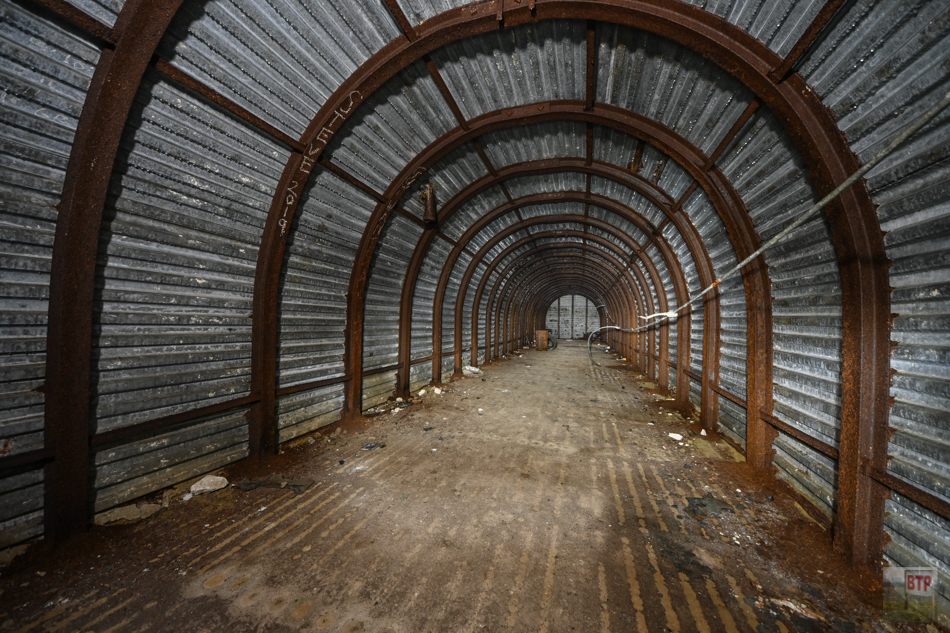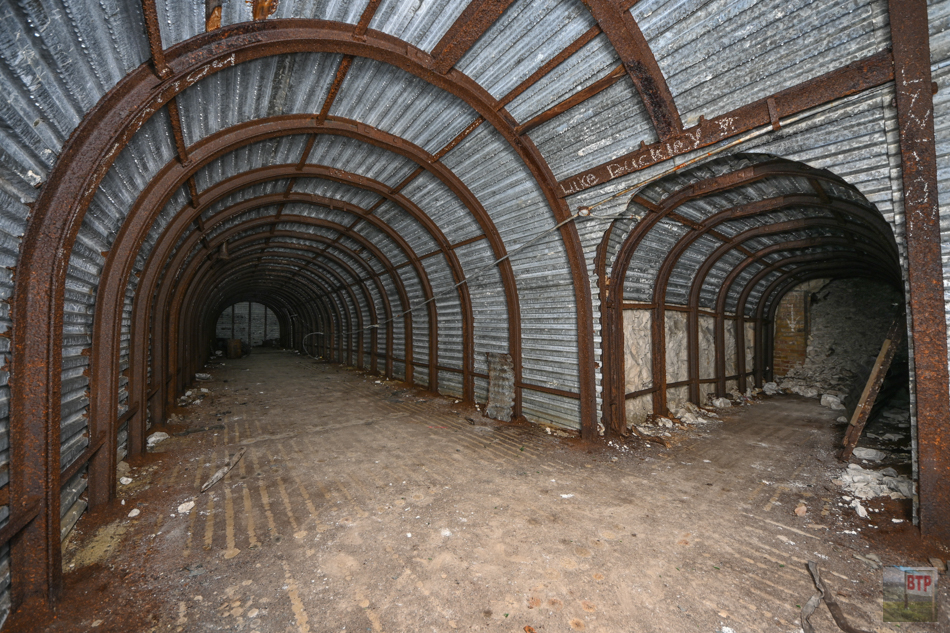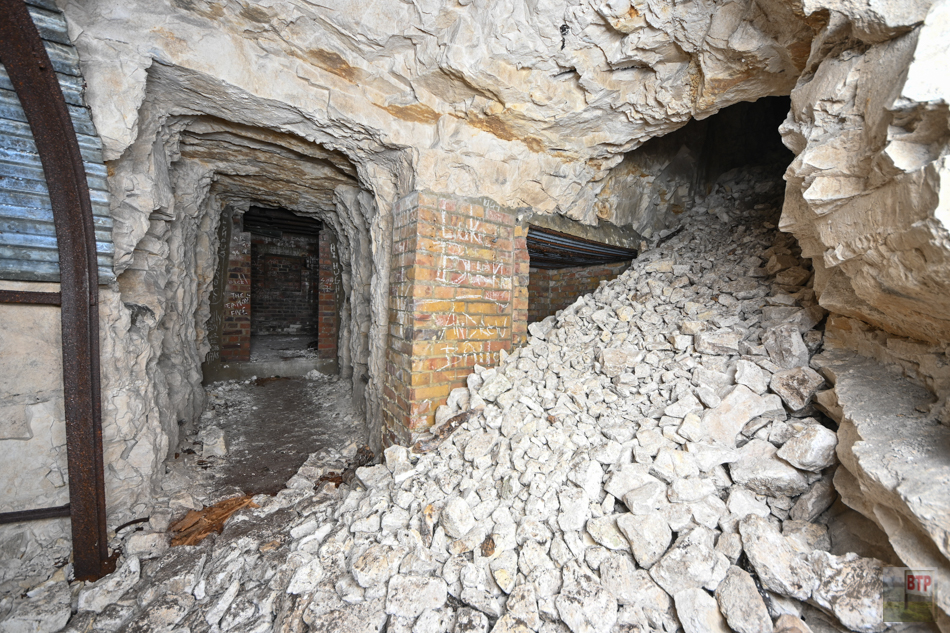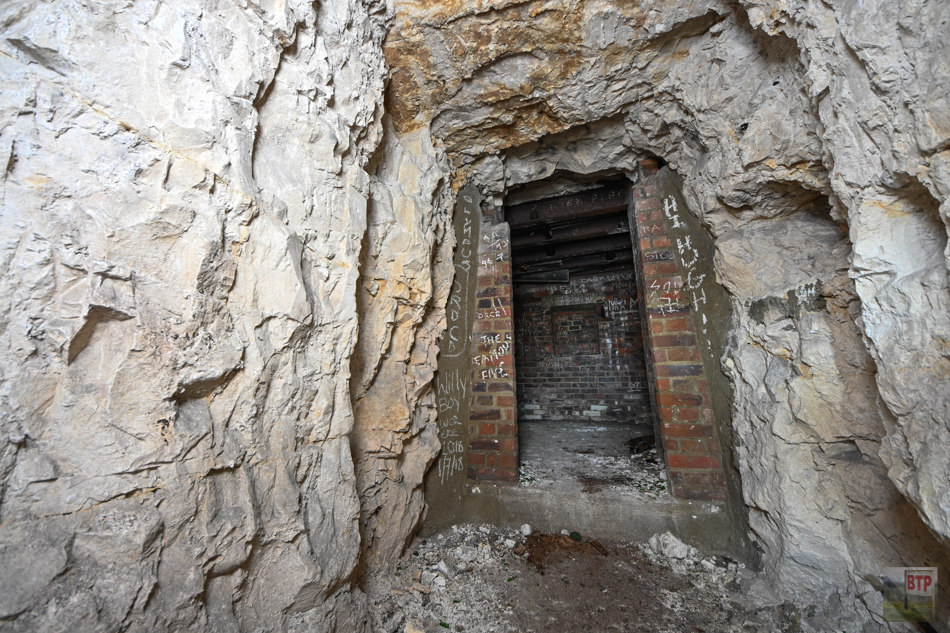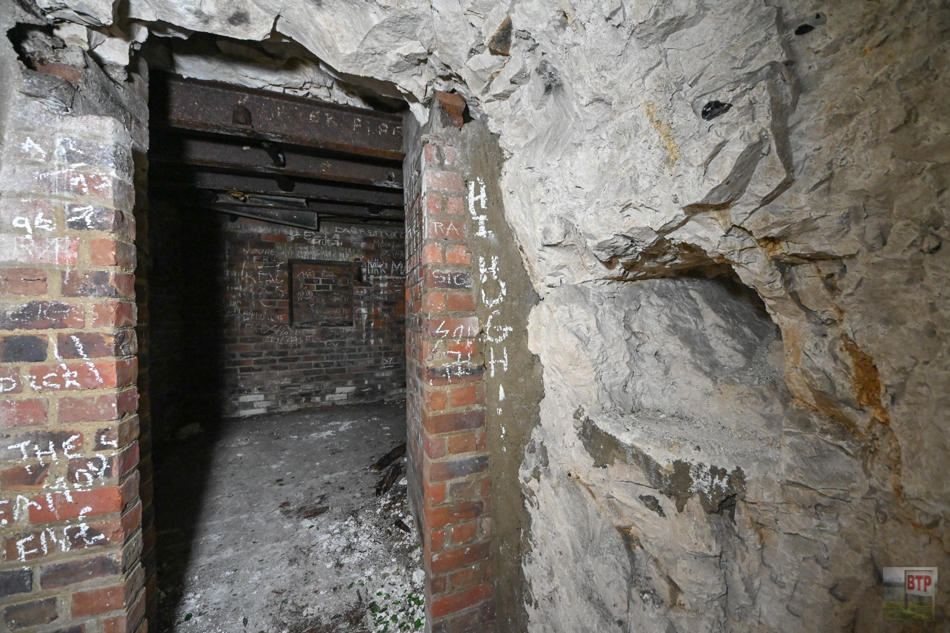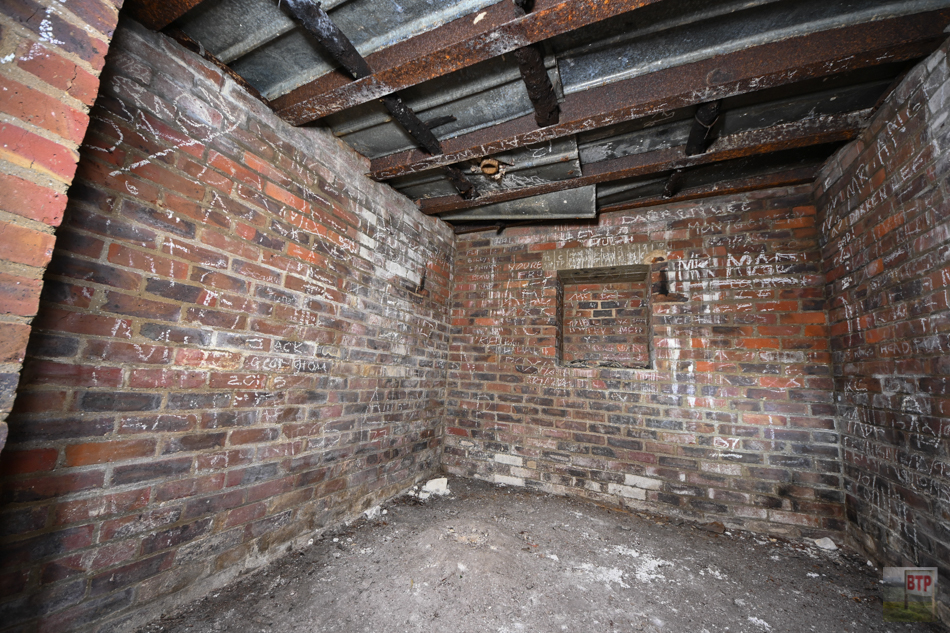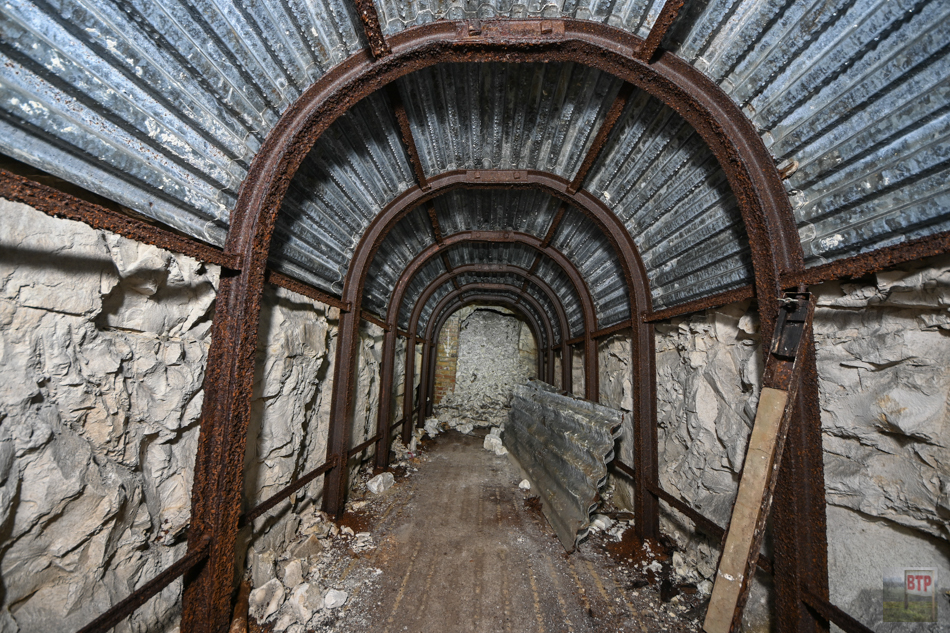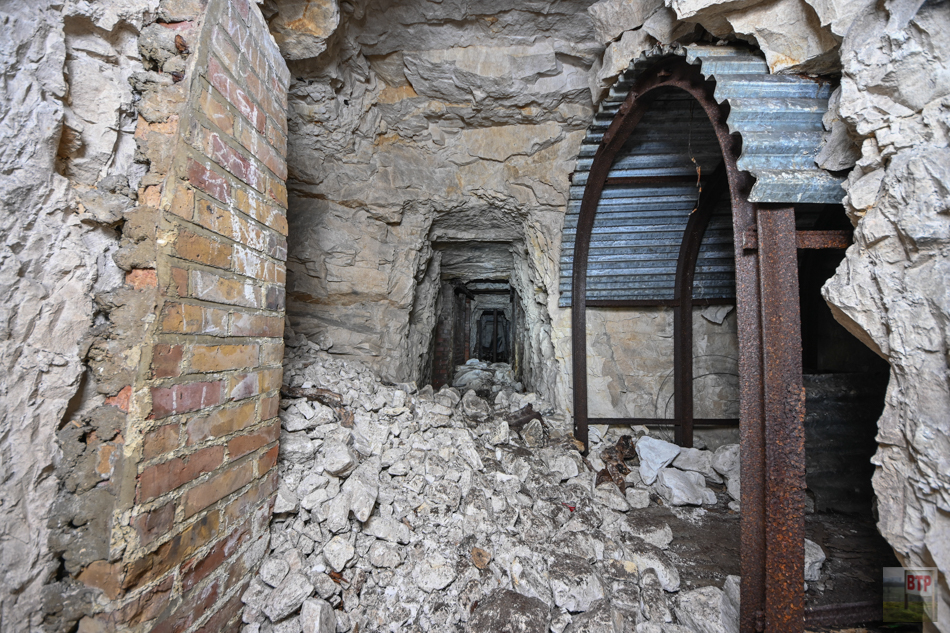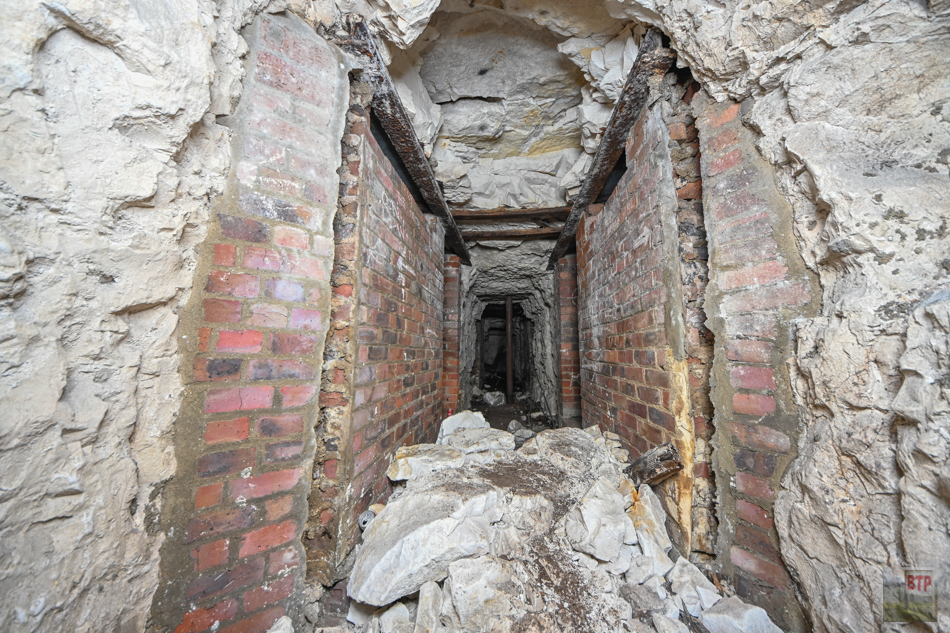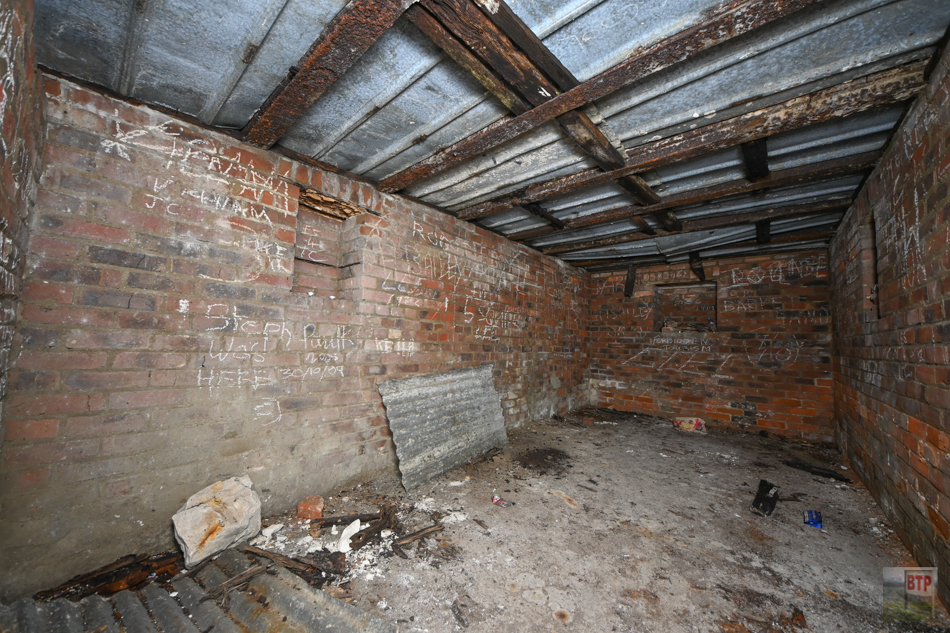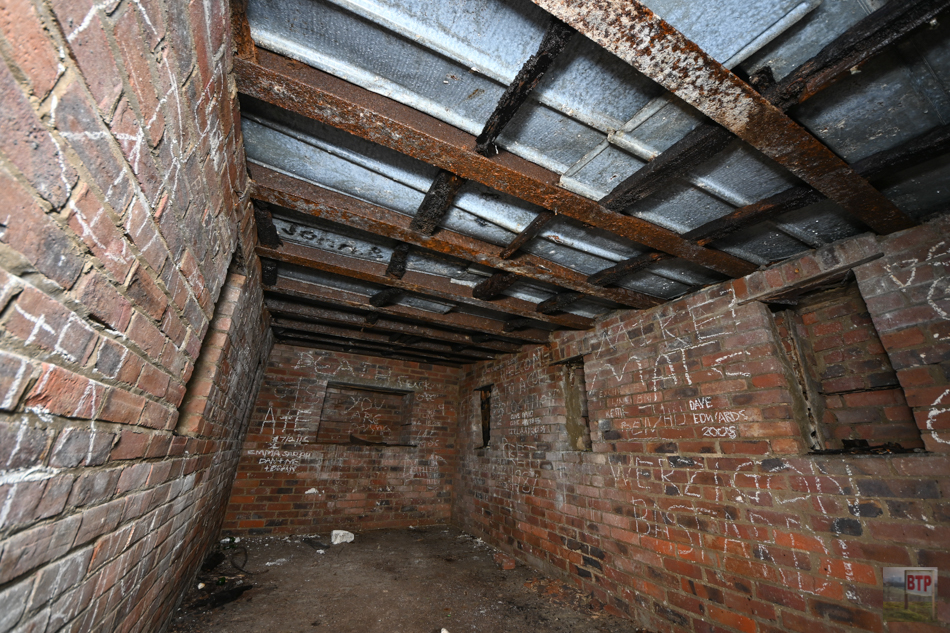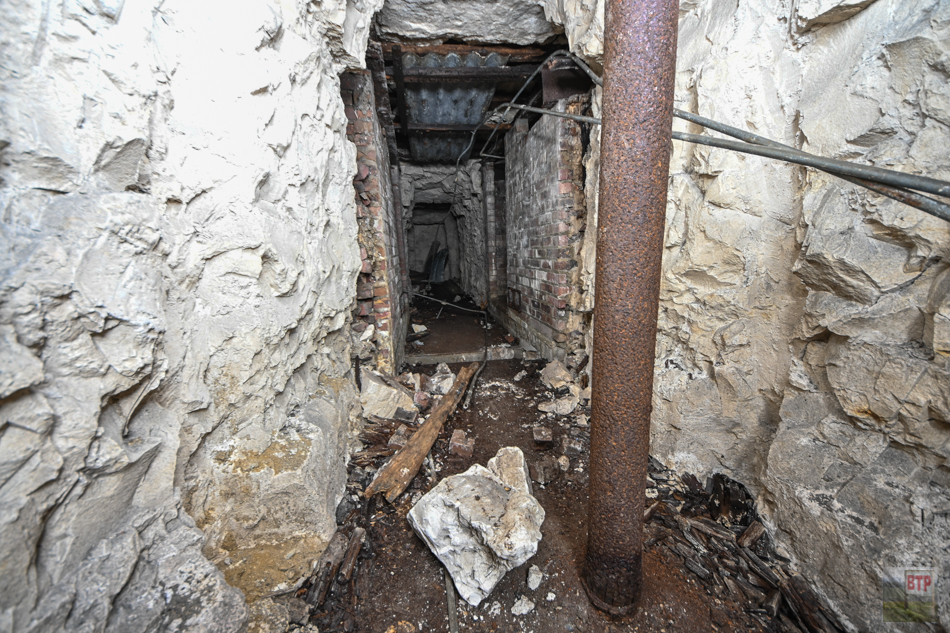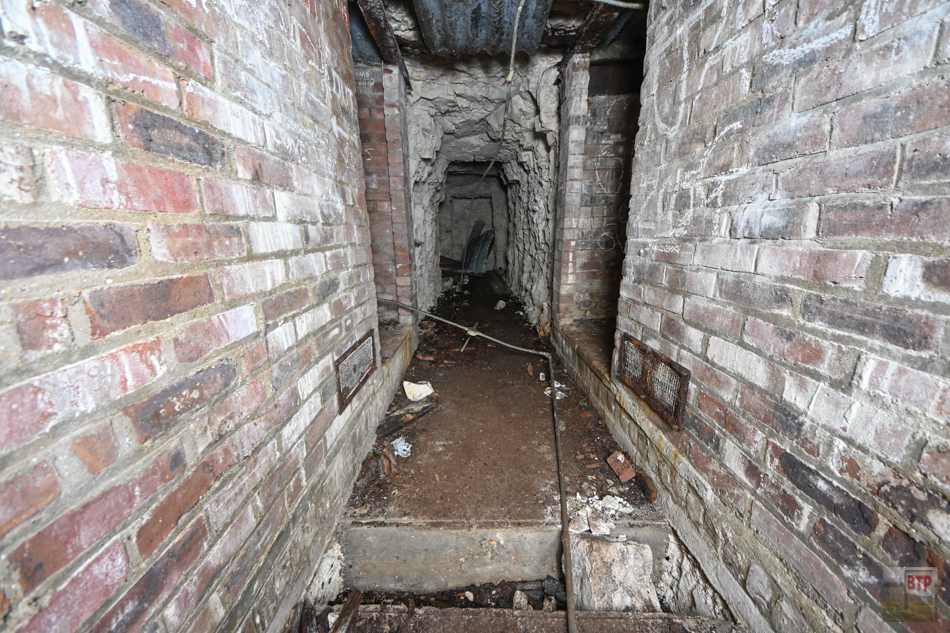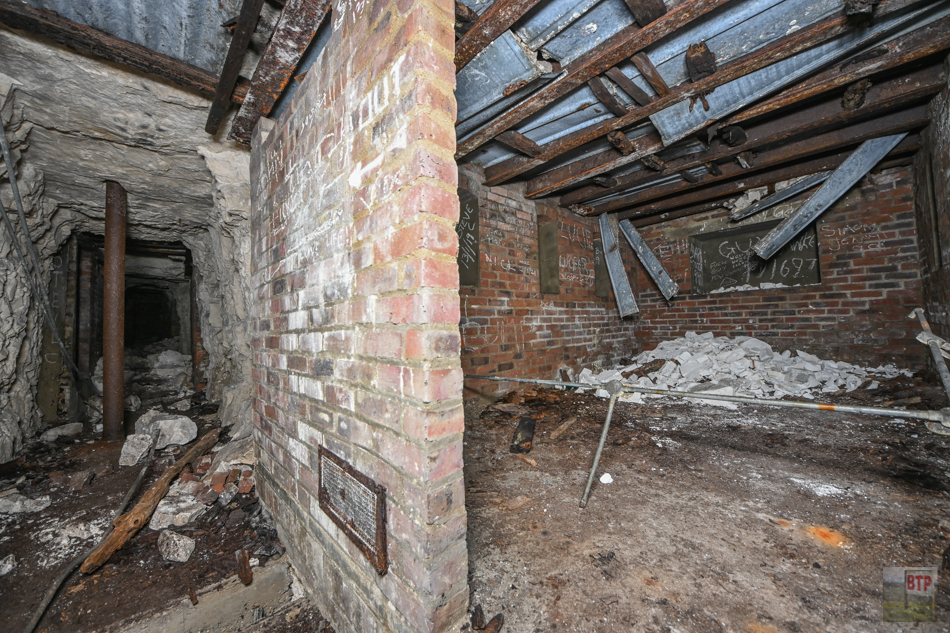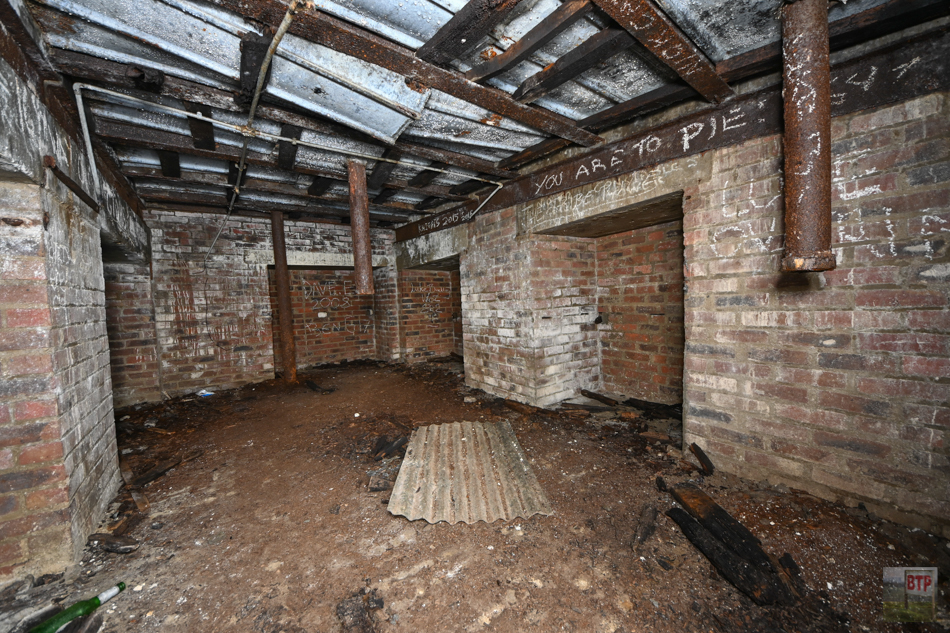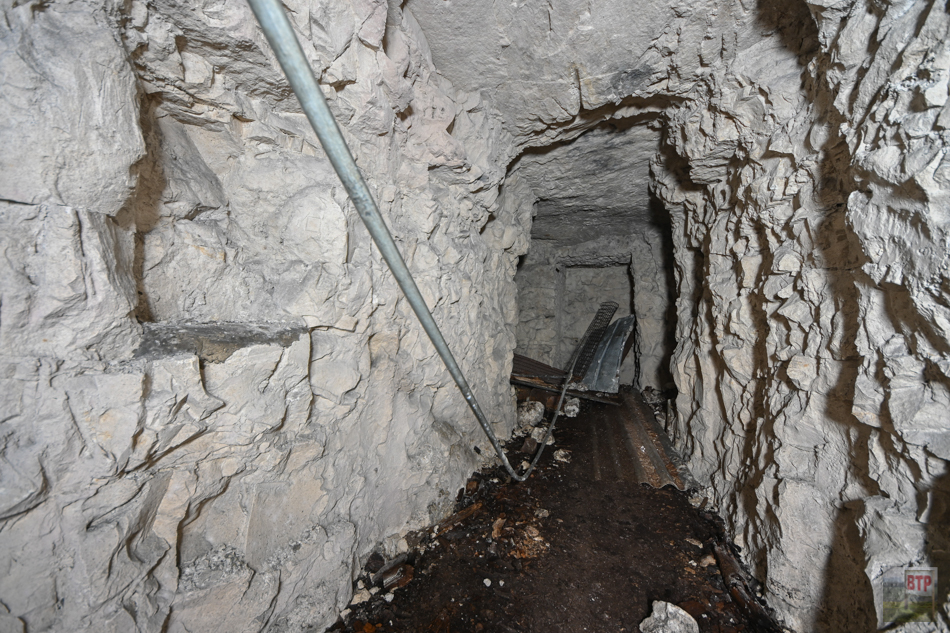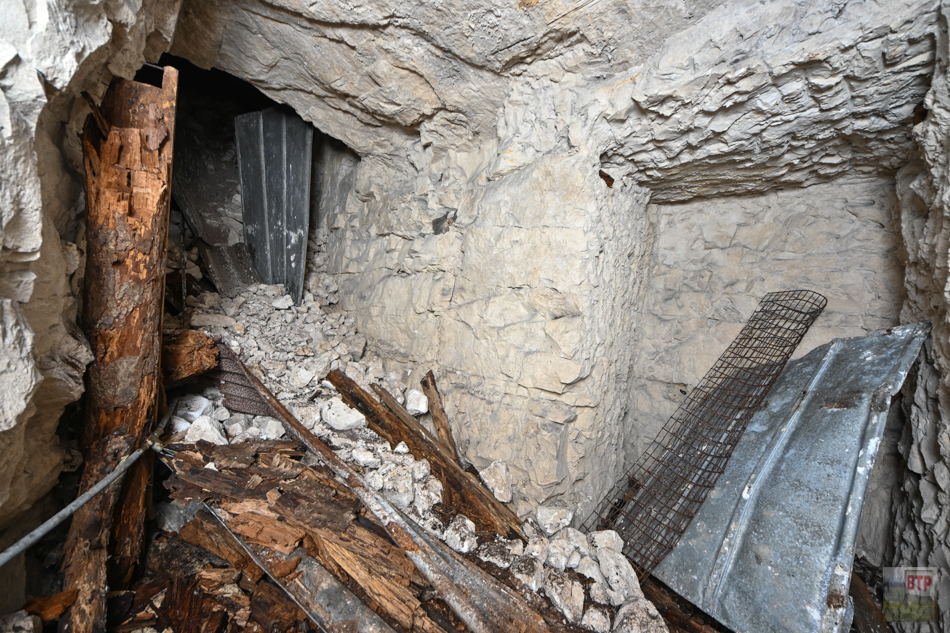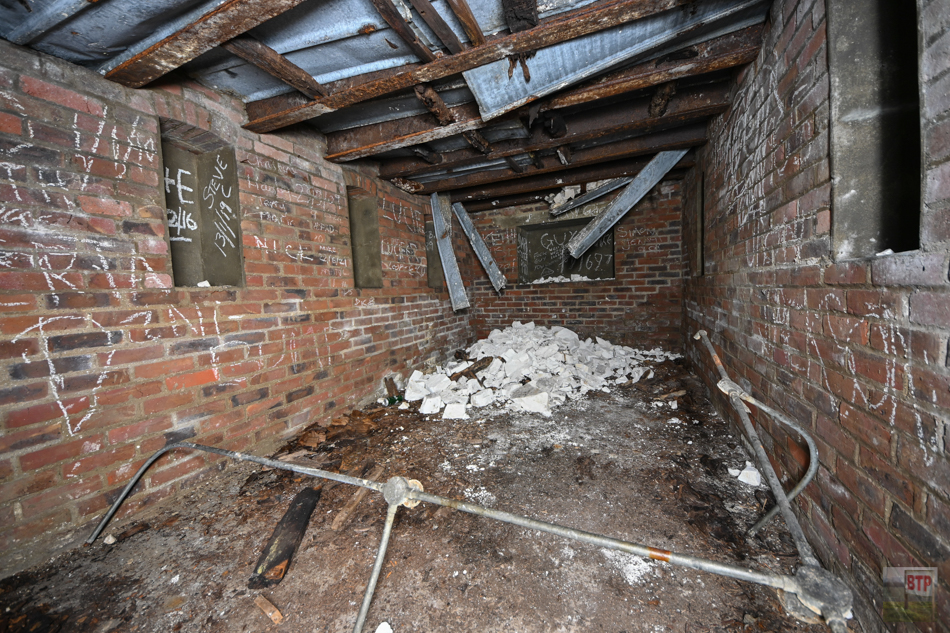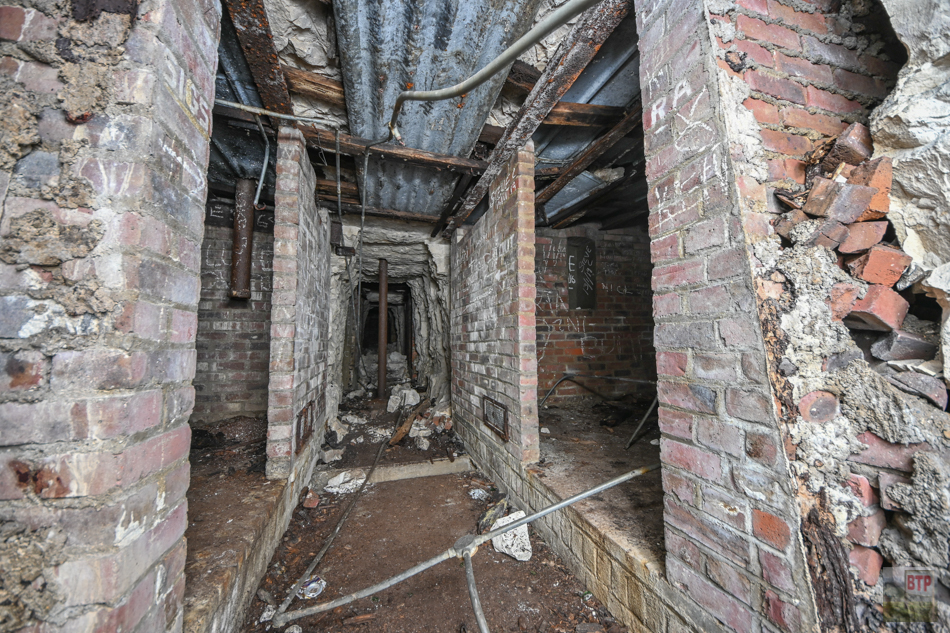The bunker was built in late 1940 as the South East Army Command Brigade Headquarters. It can be presumed that this was unlike most military installations on home ground in that it was not a defensive site for use by defensive forces; like the Home Guard or Territorial Army, but an actual command post for the Army themselves who at this time I would think were partially receded to England after Dunkirk as well as being positioned in other theatres. The South East Army Command had other tunnel systems at Tunbridge Wells, Canterbury and Reigate. You can see our exploration of the Reigate bunker here.
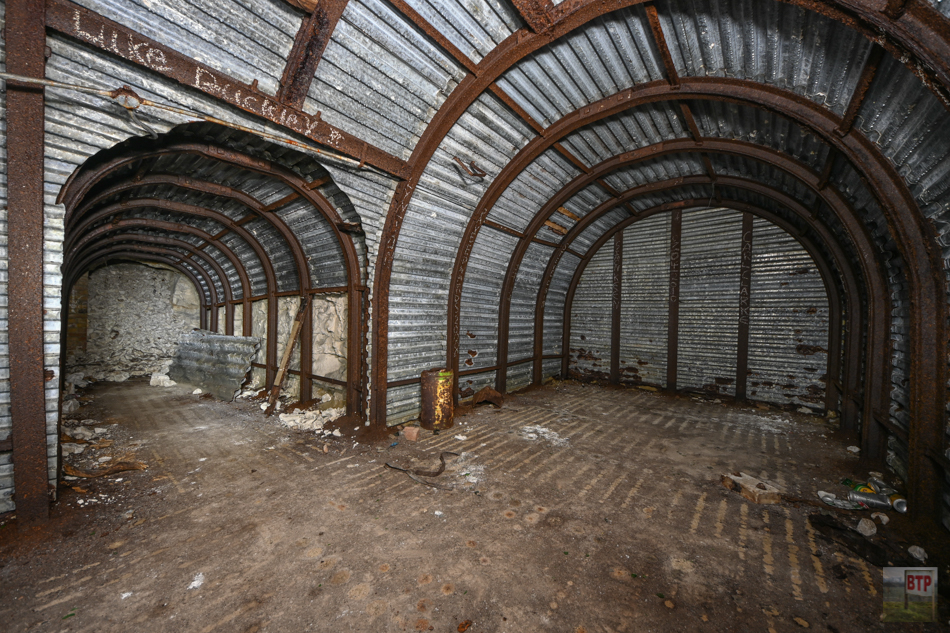
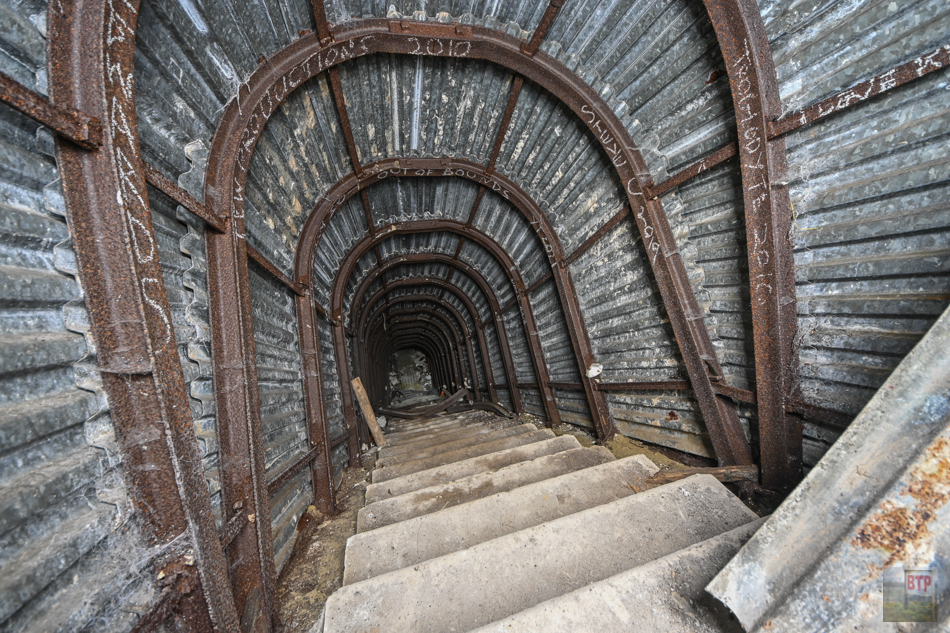
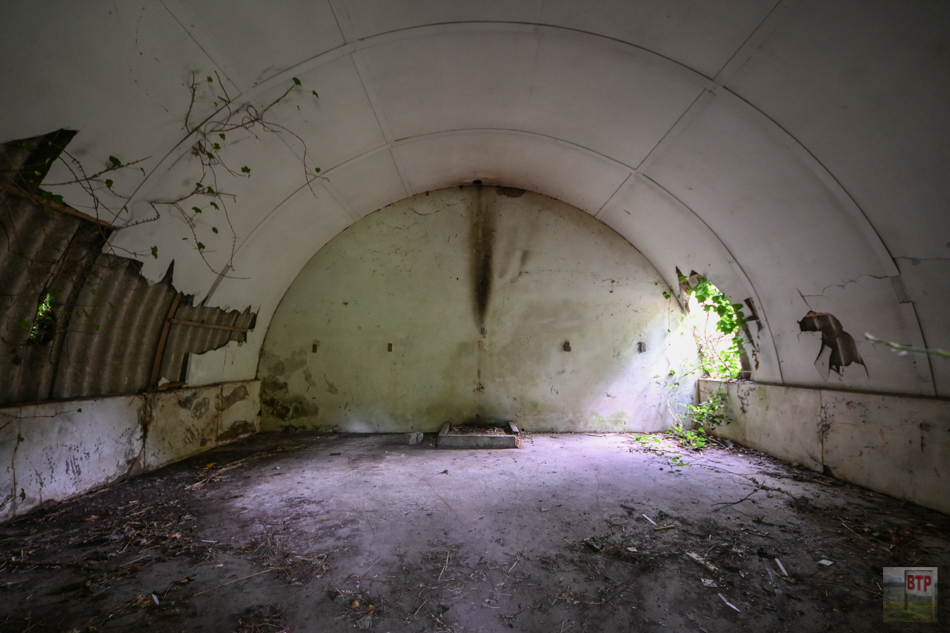
Nissen hut interior 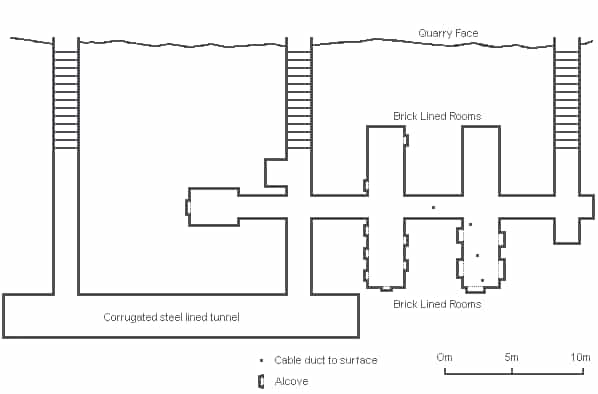
Map from Subbrit.org.uk
The tunnel system was placed within a small local quarry in the village of Sarre in east Kent. Its entrance was originally of corrugated steel protruding from the quarry bank, but has since been surrounded in a recent wooden enclosure to protect it. Within the quarry also survives around three Nissen huts; all very overgrown, with two larger ones used for farm storage and a third short one lying empty except for a fireplace. These were either associated with the tunnel system or served an adjacent anti-aircraft battery.
The bunker entrance appears to have been at somepoint partly demolished and the wreckage thrown into the start of the tunnel, because the wreckage within didn’t look like a natural collapse. We then looked down at the imposing stairs running further underground and descended. The bunker isn’t particularly big, nor in the best condition with a few disconcerting chalk avalanches, but on the whole a very well-hidden and interesting site.
Steel Tunnel & Central Junction
Brick Lined Rooms & Tunnel End
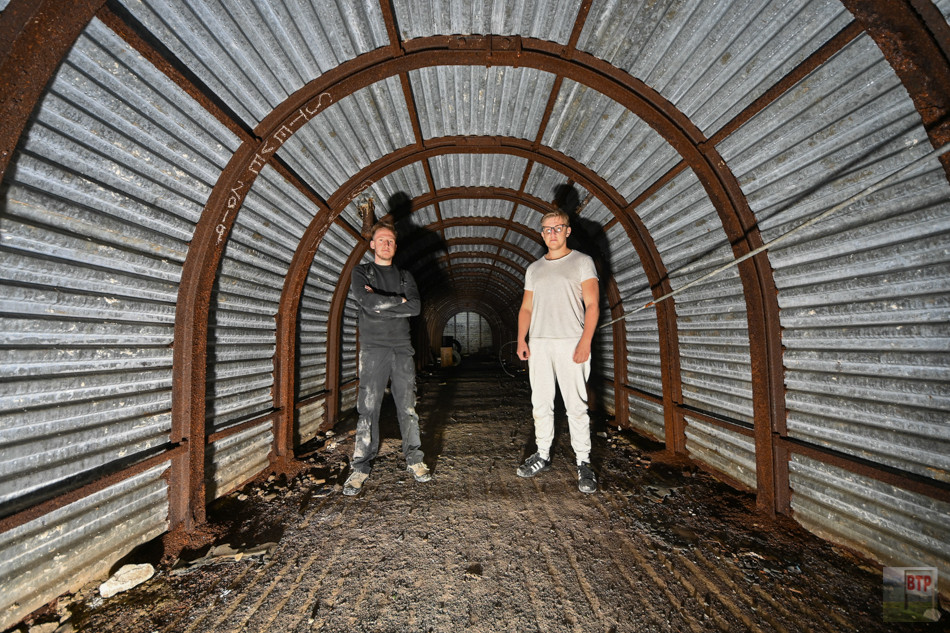
Sources:
Subbrit.org.uk
28dayslater.co.uk

